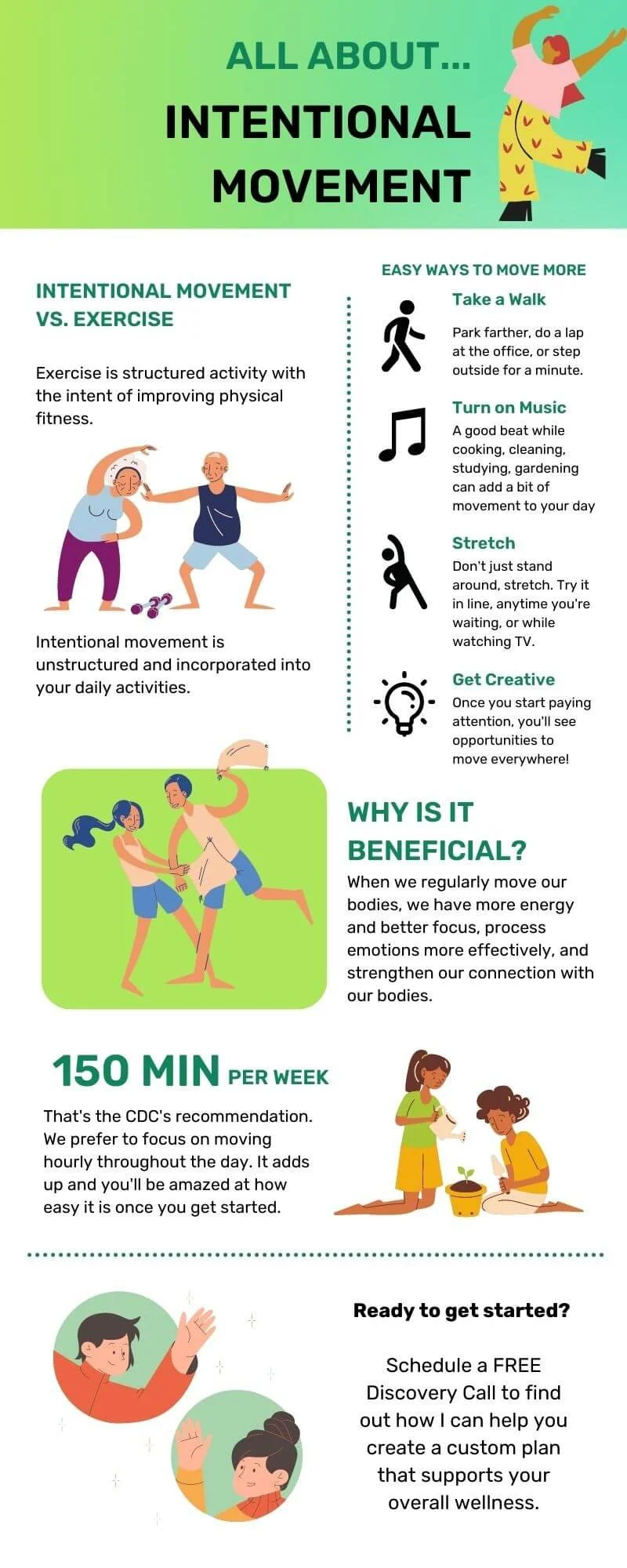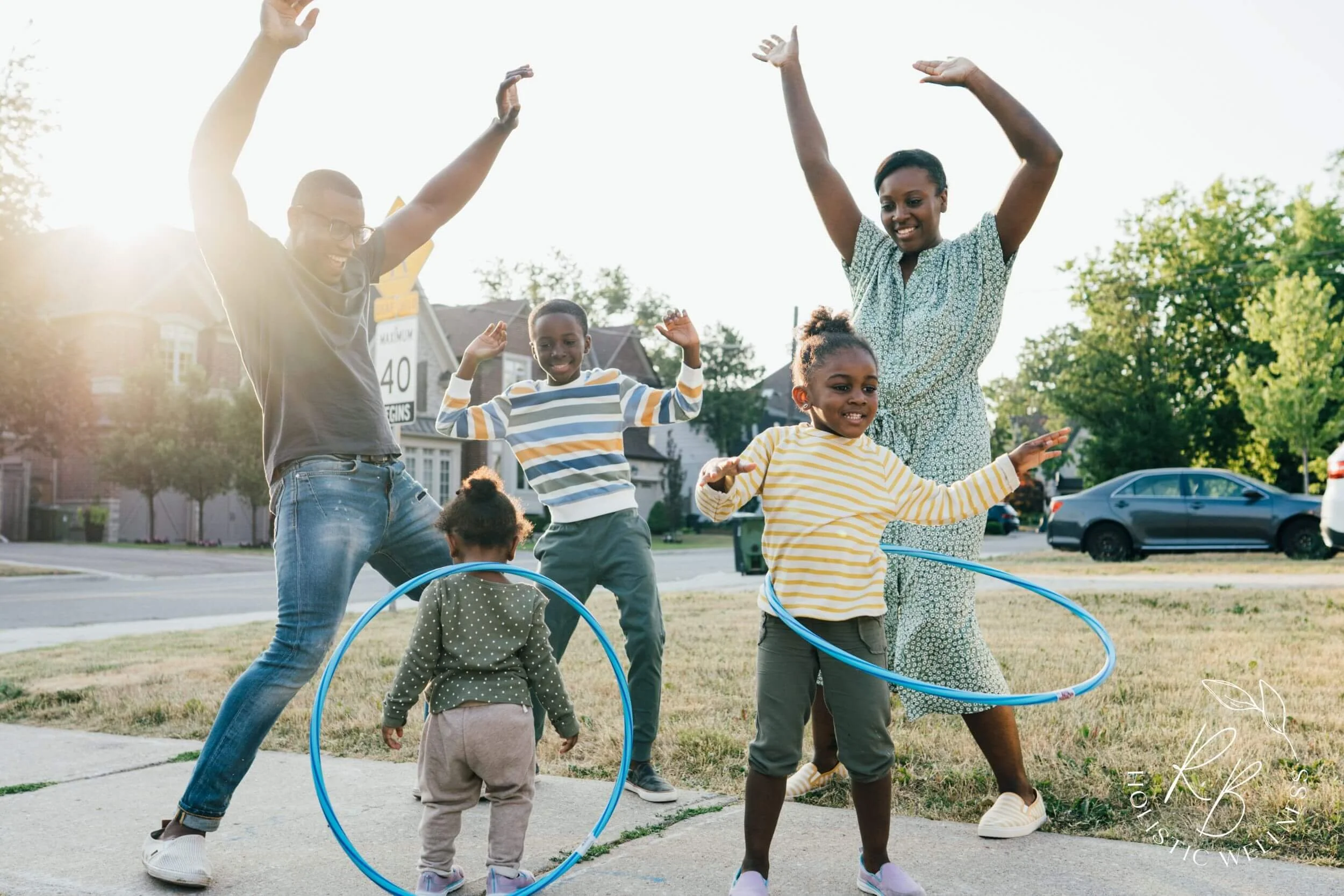What is Intentional Movement and is it better than Exercise?
When it comes to physical activity and moving our bodies, there's a lot of information available. Depending on where you look, the recommendations range from "Just add more cardio!" to "Strength training is best!" to "Choose HIIT for your best workout yet!"
What's the truth? Yep, that's a trick question. Just like all things health-related, it really depends on you.
The truth is that the most effective exercise is one that you are motivated to do and that brings you joy while you do it. That's where intentional movement comes in. If you're wondering what we mean by intentional movement and why it's a big deal, keep reading! We've gathered our most common questions on the topic to fill you in.
Frequently Asked Questions About Intentional Movement
Q: What is the difference between exercising and intentional movement?
A: Let's start with the basics. Exercising typically refers to structured physical activity that is done with the goal of improving physical fitness, while intentional movement is any type of physical activity that is done with the intention of improving overall health and wellness.
There can definitely be some overlap in activities, but typically intentional movement includes small things that you can do throughout your day and in a variety of settings, versus the more structured nature of traditional exercise.
Q: What are the recommended amounts of physical activity?
A: According to the CDC, the average adult needs 150 minutes of activity per week. However, since you’re an individual, not an average, we like to break it down a little more.
Instead of focusing on one goal for the week, focus on moving your body for a few minutes once per hour. It doesn't have to be intense: a walk around the room, waving your arms around, dancing to a song you love, doing some stretches, or striking a yoga pose are simple but effective examples.
Why is this important? When you sit or lie down for long periods of time, your large muscles don’t use glucose. Over time, this can cause issues like blood sugar fluctuations, inflammation, buildup of plaque in arteries, and an increased risk of heart disease. The good news is that just a little bit of movement can disrupt this cycle, so when you move regularly throughout the day, you’re doing a big favor for your overall health.
Q: Why is intentional movement important?
A: Studies have shown that intentional movement has many benefits, including improved physical fitness, increased energy levels, improved mental health, and improved overall health and wellness. But it goes even beyond these obvious ones. When we intentionally move our bodies regularly, we focus better, process emotions more effectively, and strengthen our connection with our bodies.
Healing, emotional resilience, increased energy, and better mental focus all with just a few minutes of movement? Sign me up!
Q: How can I incorporate intentional movement into my daily routine?
A: We mentioned a few ideas above for moving throughout your day, but let's look at some common situations.
Work or School
The key with work and school is to make small adjustments to your routines that become second nature. And don't be afraid to enlist a friend or co-worker to join you!
Take a walk around the room, building, hall, etc.
Instead of sitting in the break room or cafeteria, do a few stretches, or eat while you walk.
Talk to others in person when possible instead of calling or messaging
Take the stairs
Do some easy movements like calf raises or a short walk while you wait for coffee or copies or have phone conversations.
With small children
You might think this is a no-brainer, after all, little kids seem to always be on the move! But early childhood brings a lot of different stages-- and many sleepless nights--which can make it hard to get moving during the day.
Get outside and follow your kid around, or if they are too little, put them in a carrier and show them the world (bonus points because they get snuggle time while you get moving).
When the weather is bad, take your walk to a mall, the library, or your favorite shop or bookstore.
Spend a few minutes singing and dancing to silly songs.
Find "mommy and me" movement videos, kids yoga, or "brain breaks".
Do a few stretches while your child naps.
Try a dose of Arnica 200 to help with that low energy feeling that comes with a bad rest night.
At home and on the weekends
For many people, the unstructured time between work, school, and other activities is when they have the hardest time incorporating movement. The best way to combat this is to take inventory of the times when you are typically sedentary (for example, while watching TV) and see how you can include some movement.
Dance to your favorite song
Garden or do yard work
Take a walk
Park a little further away
Take the stairs
Stretch
Swim
Learn tai chi or yoga
Go on a hike
Ride bikes
Visit a bookstore or local shop
Do household chores
Add a floor stretch routine while you’re watching TV
Q: How can I find activities that I love?
A: Finding movement that you love is all about exploring different types of activities and seeing what works for you. When trying a new activity, pay attention to how your body and mind feel during and after the activity.
Feeling stuck? Find ways to include movement in the hobbies and activities you’re already doing. For example, turn on music and move to the beat while you bake or do some stretches while you watch a movie.
Q: Where can I get help to reach my movement goals?
A: If you’re feeling overwhelmed or unsure of where to start, schedule a free Discovery Call.
Together, we will look at your life and create a plan that is tailored to your individual needs and goals for overall wellness. Plus, I’ll provide personalized guidance, support and accountability to help you reach your movement and wellness goals every step of the way.



